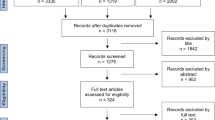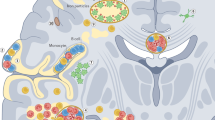Abstract
Background
There is accumulating evidence that long-term disability and disease progression in multiple sclerosis (MS) are due to prolonged sodium channel opening along demyelinated axons. Despite good evidence in animal models of MS that partial voltage-gated sodium channel (VGSC) blockade reduces disease progression, little is known about its effects in patients, despite widespread use of such agents in the symptomatic management of MS.
Objective
To determine if long-term exposure to the VGSC-blocking drug carbamazepine (CBZ) alters disease progression in MS.
Methods
Using a retrospective chart review of patients diagnosed with MS, we compared progression of disability between patients exposed the VGSC blocker CBZ with those who were not exposed to the drug. Both whole-group and matched case–control analyses were performed after correcting for the influence of age, gender, MS subtype, expanded disability status score at diagnosis, use of disease-modifying therapy, and year of initial therapy. The multiple sclerosis severity scale (MSSS) was used as a measure of disease severity. The primary outcome measure was MSSS score difference between groups.
Results
Four hundred patients were included; 51 received CBZ symptomatic therapy (average duration of therapy 27 months). There was no significant difference in mean MSSS between the two groups in either the whole group comparison (p = 0.63) or the matched analysis (p = 0.12).
Conclusion
Despite preclinical evidence suggesting a neuroprotective role of VGSC blockers in animal models of MS, this retrospective study suggests that long-term exposure to the VGSC-blocking drug CBZ fails to alter long-term disability and disease progression in MS patients.

Similar content being viewed by others
References
Waxman SG (2008) Mechanisms of disease: sodium channels and neuroprotection in multiple sclerosis: current status. Nat Clin Pract Neurol 4:159–169
Lo AC, Saab CY, Black JA, Waxman SG (2003) Phenytoin protects spinal cord axons and preserves axonal conduction and neurological function in a model of neuroinflammation in vivo. J Neurophysiol 90:3566–3571
Kapoor R (2008) Sodium channel blockers and neuroprotection in multiple sclerosis using lamotrigine. J Neurol Sci 274:54–56
Craner MJ, Damarjian TG, Liu S, Hains BC et al (2005) Sodium channels contribute to microglia/macrophage activation and function in EAE and MS. Glia 49:220–229
Black JA, Liu S, Carrithers M, Carrithers LM, Waxman SG (2007) Exacerbation of EAE after withdrawal of phenytoin and carbamazepine. Ann Neurol 62:21–33
Thompson AJ, Toosy AT, Ciccarelli O (2010) Pharmacological management of symptoms in multiple sclerosis: current approaches and future directions. Lancet Neurol 9:1182–1199
Kapoor R, Furby J, Hayton T et al (2010) Lamotrigine for neuroprotection in secondary progressive multiple sclerosis: a randomised, double-blind, placebo-controlled, parallel-group trial. Lancet Neurol 9:681–688
Roxburgh RHSR, Seaman SR, Masterman T et al (2005) Multiple Sclerosis Severity score: using disability and disease duration to rate disease severity. Neurology 64:1144–1151
D’Agostino RB Jr (1998) Tutorial in biostatistics: propensity score methods for bias reduction in the comparison of a treatment to a non-randomized control group. Stat Med 17:2265–2281
Rosenbaum PR (2010) Design of observational studies. Springer, New York
R Development Core Team (2008) R: A language and environment for statistical computing. r foundation for statistical computing, Vienna, Austria. ISBN 3-900051-07-0
Hansen BB, Olsen Klopfer S (2006) Optimal full matching and related designs via network flows. J Comput Graph Stat 153:609–627
Conflict of interest
None of the authors report any conflict of interest.
Author information
Authors and Affiliations
Corresponding author
Rights and permissions
About this article
Cite this article
Counihan, T.J., Duignan, J.A., Gormley, G. et al. Does long-term partial sodium channel blockade alter disease progression in MS? Evidence from a retrospective study. Ir J Med Sci 183, 117–121 (2014). https://doi.org/10.1007/s11845-013-1042-7
Received:
Accepted:
Published:
Issue Date:
DOI: https://doi.org/10.1007/s11845-013-1042-7




